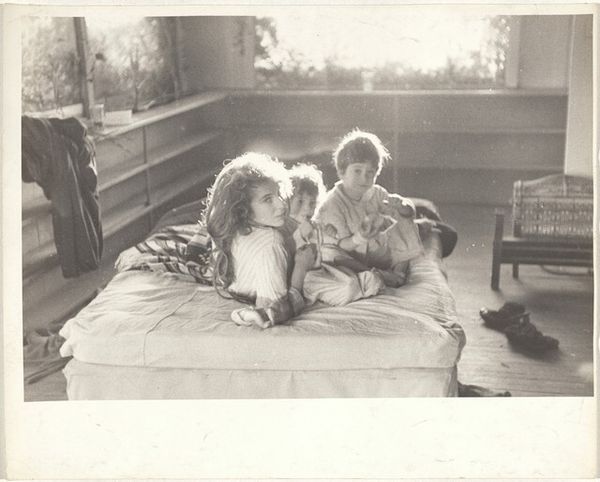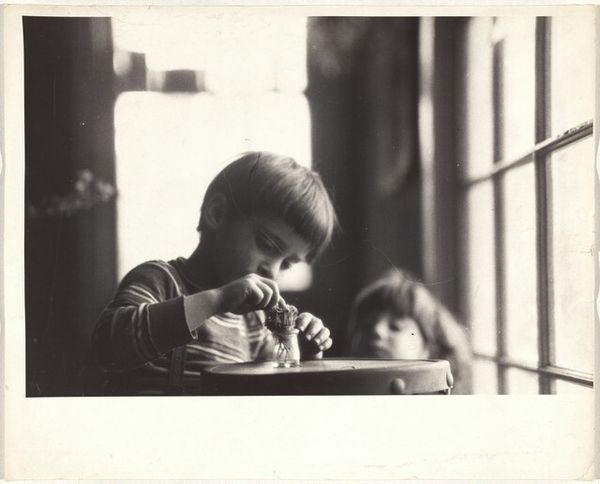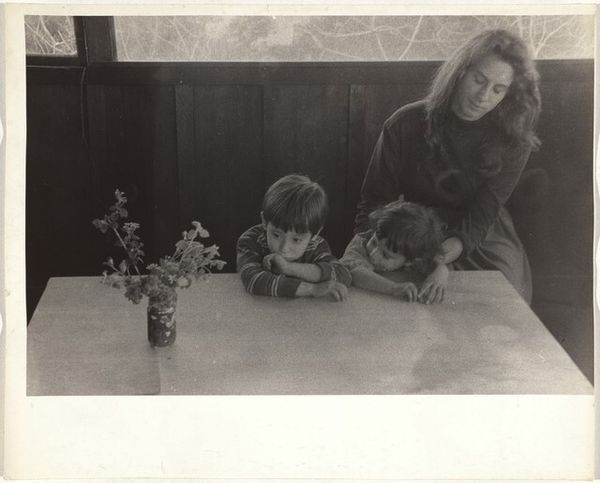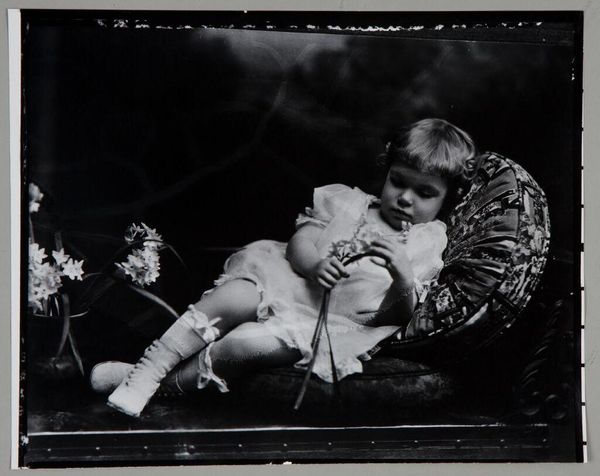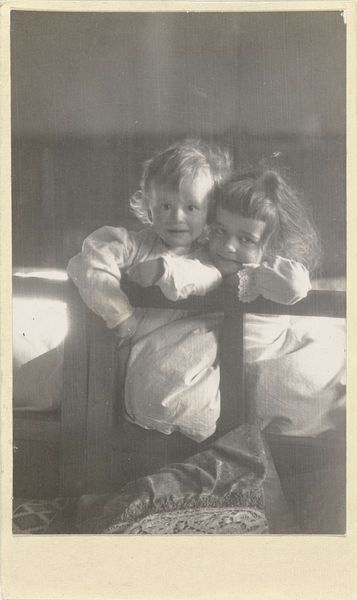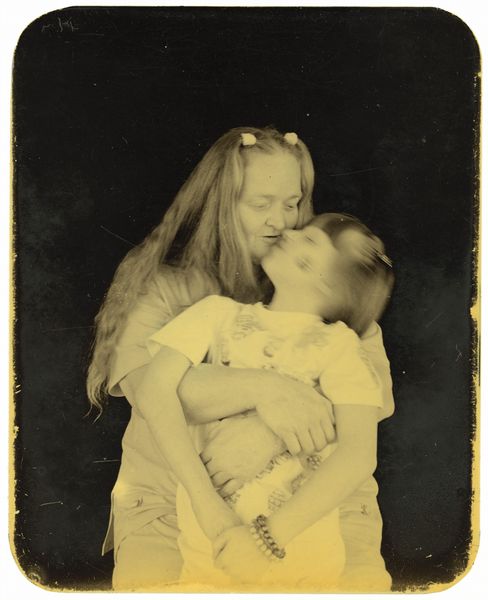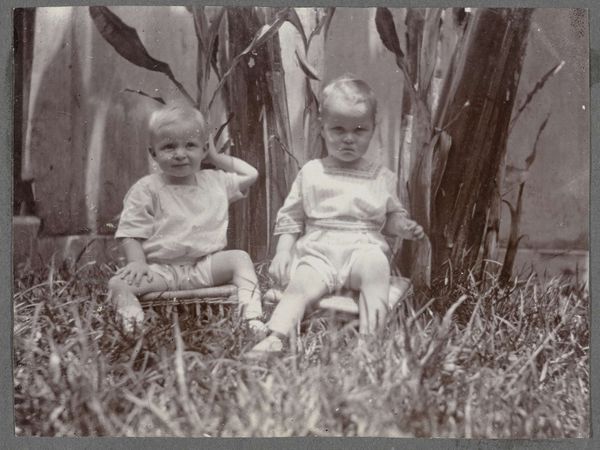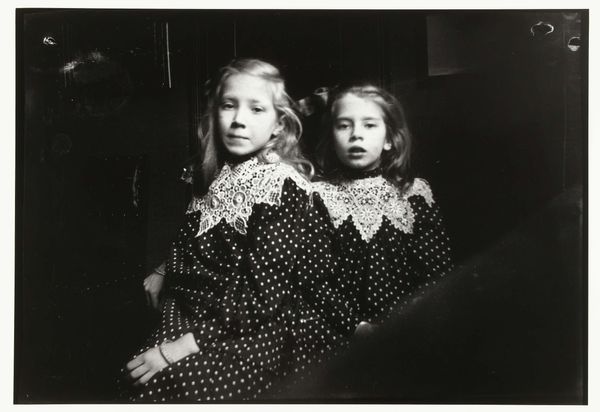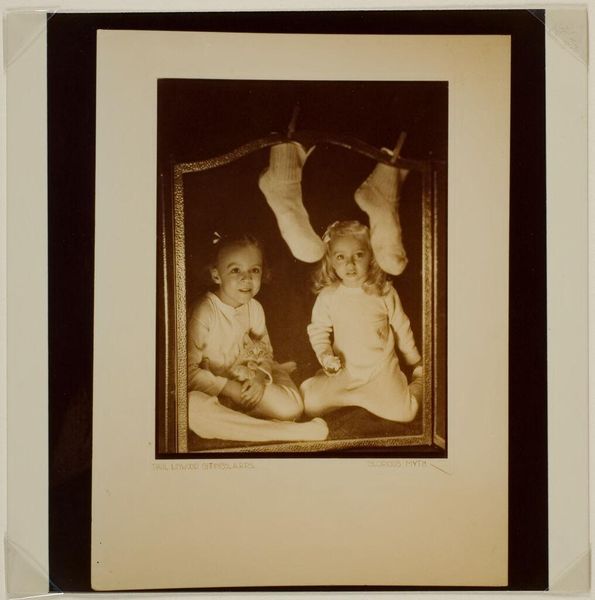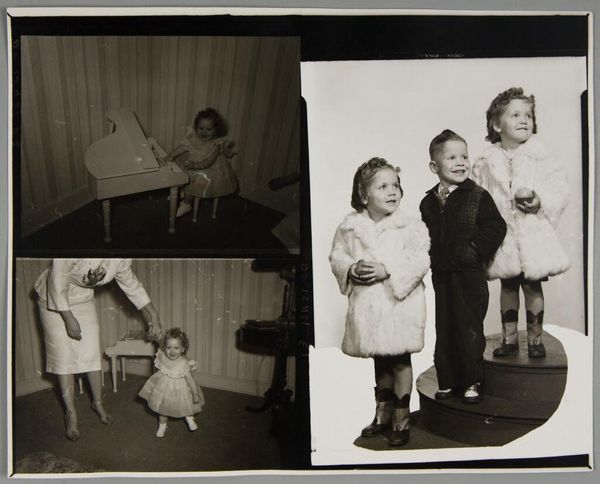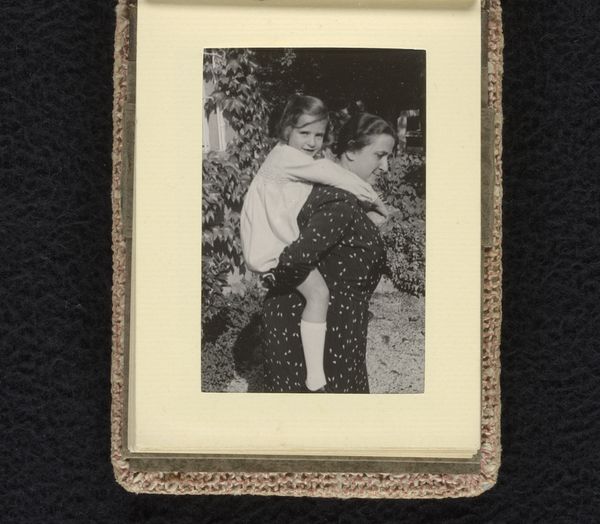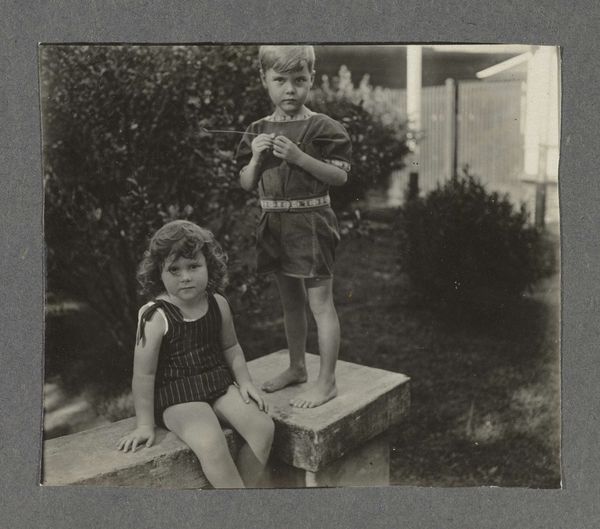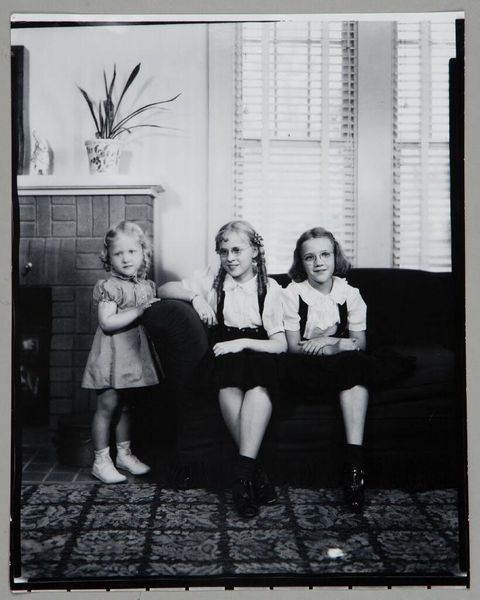
Irène en Renée (twee dochters van de fotograaf) poserend als engelen (cherubini) van Rafaël Possibly 1909
0:00
0:00
Dimensions: height 97 mm, width 152 mm, height 108 mm, width 167 mm
Copyright: Rijks Museum: Open Domain
Editor: This is a charming photographic print, possibly from 1909, by Henry Pauw van Wieldrecht, called 'Irène en Renée (twee dochters van de fotograaf) poserend als engelen (cherubini) van Rafaël.' It features two young girls posed as angels, seemingly referencing Renaissance paintings. What strikes me is how the wings are almost crudely attached, contrasting with the soft focus on the girls’ faces. What's your take on this piece? Curator: What's most interesting here is the deliberate artificiality. Van Wieldrecht hasn’t tried to hide the means of production; we can see the seams, the rough application of the wings. The photographic process itself becomes foregrounded, pushing against the symbolic content of angelic innocence. This tension points to the cultural moment, where anxieties about image-making and its relationship to truth were burgeoning. It makes one wonder about the labor involved, and the potential for children’s labour to represent such ethereal imagery. What materials might they have used to create the wings, and where would they source those materials at the time? Editor: That’s a great point! I hadn't considered the construction of the wings as being significant. The material context makes it far more grounded, even subversive. So, it's not just a portrait of idealized children; it’s about the means by which that ideal is constructed, both visually and materially. Curator: Precisely. By focusing on the "how" – the physical processes and the social realities – we can see beyond the sentimental surface. It challenges our consumption of idealized images and prompts a consideration for those less-visible materials and processes, including child labor, involved in production of these idyllic images. Editor: I see this image in a new light now. I’ll definitely be paying closer attention to material choices and methods of creation in my future analysis of art.
Comments
No comments
Be the first to comment and join the conversation on the ultimate creative platform.
